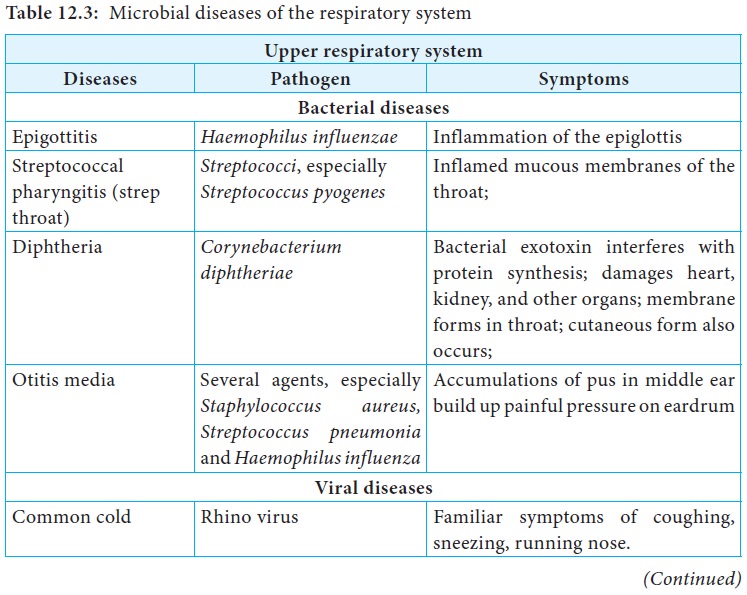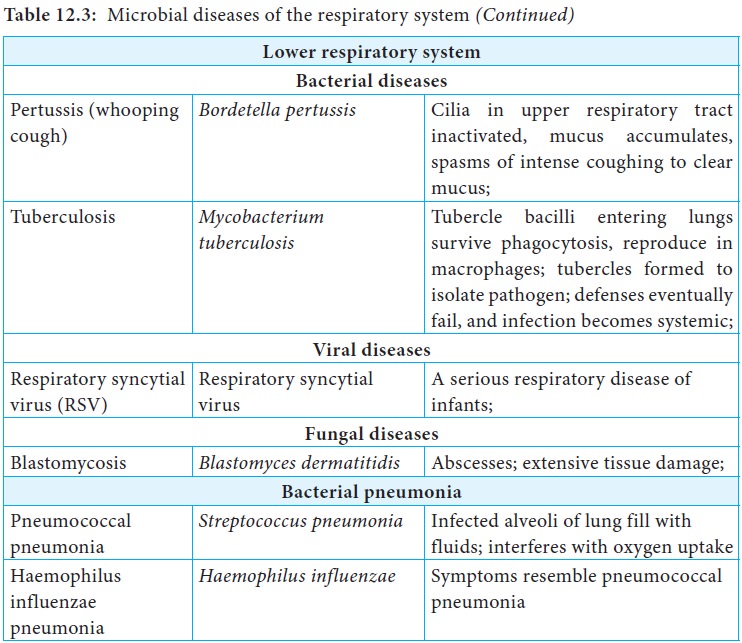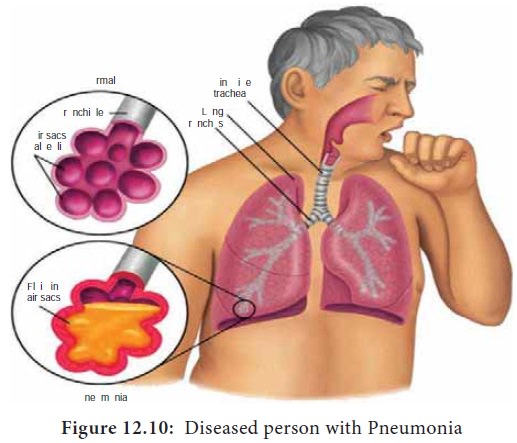Chapter: 11th Microbiology : Chapter 12 : Medical Microbiology
Respiratory Tract Infections - Medical Microbiology
Respiratory Tract Infections
With every breath,
we inhale several microorganisms and therefore the
respiratory system is a major portal of entry for pathogens. In fact,
respiratory system infections are the most common type of infections and among
the most damaging. Some pathogens that enter via respiratory route can infect
other parts of the body, such as skin incase of measles, mumps and rubella.
The upper respiratory system has several anatomical defenses
against airborne pathogens. Coarse hairs in the nose, filter large dust
particles from the air. The nose is lined with a mucous membrane that contains
numerous mucous secreting cells and cilia. The upper portion of the throat also
contains a ciliated mucous membrane. The mucous moistens inhaled air and traps
dust and microorganisms. The cilia help to remove these particles by moving
them towards the mouth for elimination.
Structure of Respiratory Tract
The structure of respiratory tract is divided into two main
parts viz: upper respiratory tract (URT) and lower respiratory tract (LRT).
Upper respiratory tract includes mouth, nose, nasal cavity,
sinuses, throat or pharynx, epiglottis and larynx.
Lower respiratory tract includes trachea, bronchi, bronchioles,
lungs and alveoli (Figure 12.9).

Normal Defenses against Infections
1.
Arrangement of nose: There is no direct entry of air into (LRT).
2.
Broncho constriction helps to trap the microorganisms.
3.
Cough reflex expels the microbes out side.
4.
Mucociliary blanket traps the organisms.
5.
Mucosal factors: Kill the organisms by
a. Non specific way
i. Lysozyme: Cell wall of Gram positive organism are lysed
ii. Influenza virus inhibitors do not allow the virus to
multiply
iii. Resident macrophages kill the organisms
b. Specific manner
Secretory IgA antibody: Forms first line of defense
Respiratory tract infection are divided into upper respiratory
tract (URT) tract infection and lower respiratory tract (LRT) infection.
Infection of the respiratory tract are listed in the Table 12.3.


URT: Infections are
Sinusitis, Pharyn-gitis Laryngitis and Epiglotitis
LRT: Infections are
Trachiitis, Tracheo bronchitis, Bronchitis,
Alveolitis and Pneumonia (Figure 12.10).

Related Topics